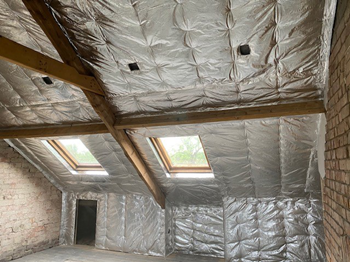Why Choose Multifoil Loft Insulation over Fibreglass
Why Choose Multifoil Loft Insulation over Fibreglass
When it comes to maintaining warmth and energy efficiency in our homes, loft insulation is a crucial factor. For a long time, fibreglasss has been the preferred material for insulating lofts. However, there is now a new contender in the market that is changing the game- multifoil insulation. This innovative solution is gaining popularity among both homeowners and builders, offering numerous advantages that traditional fiberglass cannot match. In this guide, we will explore the reasons why choose multifoil loft insulation over fibreglass, such as YBS SuperQuilt and EcoQuilt Expert.
Understanding the Basics of Loft Insulation
The purpose of loft insulation is to act as a shield between your indoor area and the external environment, thus preventing heat from escaping through the roof. This is especially crucial as an uninsulated loft can result in losing up to 25% of a house’s heat. Through the installation of insulation, you can greatly decrease heat loss, cut down on energy expenses, and improve the comfort of your living space.
In the past, loft insulation has primarily relied on fiberglass and mineral wool. These products function by trapping air in their fibres, forming a barrier that hinders the transfer of heat. While they have proven to be somewhat effective, these conventional choices have their drawbacks, such as potential health hazards, short lifespan, and the requirement for thick layers to attain a high level of insulation.
Introducing Multifoil Insulation
Multifoil insulation is a type of thermal insulation that is often used in construction and retrofit projects to improve energy efficiency. It consists of multiple layers of reflective materials, such as aluminium foil, with wadding, foam, or an air-filled bubble membrane. This design helps to reduce heat transfer through radiation, conduction, and convection, making it an effective way to keep buildings warm during cold months and cooler during hot months. Overall, multifoil insulation is a versatile and efficient solution for improving the thermal performance of buildings.
How Multifoil Insulation Works
Multifoil insulation contains layers of foil that serve as barriers against radiant heat. This helps to keep heat inside your home during the winter and deflect it away during summer. The layers of insulation between the foil sheets add extra protection against heat transfer, resulting in a remarkably efficient thermal barrier.
The Benefits of Multifoil Insulation Compared to Fiberglass
When we compare the use of multifoil insulation to fiberglass in loft applications, it becomes clear that the former has several advantages. In this discussion, we will look into the main benefits that make multifoil insulation the better option for loft insulation.
Heat Efficiency
Multifoil insulation provides excellent thermal efficiency, often surpassing that of fiberglass whilst multifoil insulation is a much thinner product. By reflecting radiant heat and having a low thermal conductivity, it creates a more efficient shield against heat loss.
Space-Saving Design
One of the main benefits of multifoil insulation is its slim design. Unlike fiberglass insulation, which typically needs thick layers to effectively insulate, multifoil can deliver equal or even superior performance while using significantly less thickness. This efficient use of space is especially valuable in loft areas where vertical space is limited.
Flexibility and Simplicity in Installation
Multifoil insulation has great adaptability and can serve different purposes other than just being used as loft insulation. Its weight is minimal, it is flexible and can be easily cut and shaped around any obstructions, making the installation process much simpler compared to the arduous task of dealing with fiberglass.
Durability
In contrast to fiberglass, multifoil insulation does not settle or diminish in its insulating abilities over time. It remains efficient for many years, without being affected by moisture, mould, or pests. This guarantees its longevity without the requirement for frequent replacement or upkeep.
Health and Safety
Handling fiberglass insulation can be a dangerous job, necessitating the use of protective equipment to prevent skin irritation and breathing problems. In comparison, multifoil insulation is not only safe to manage but also does not emit harmful fibers. Making it a significantly healthier choice for both installers and homeowners.

 Fast Next Working Day Delivery
Fast Next Working Day Delivery Bulk Discounts Available
Bulk Discounts Available Order Pre 2pm for Delivery
Order Pre 2pm for Delivery 
